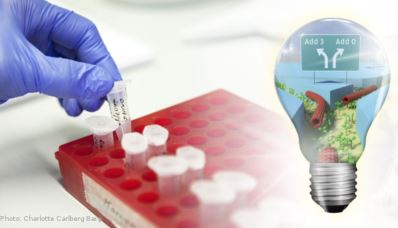Nanoscale biological motors – a call for creative technological solutions
LTH researchers are advancing towards high-efficient computers, using nanoscale biomolecules. They have now announced an idea competition that is open for all.
– Published 13 March 2018

Can you provide a solution for marking nanoscale biomolecules so their path through a network can be followed?
LTH researchers, together with an international consortium, are conducting research at nano-level using biomolecules for the development of computers with low energy consumption and a capacity to solve highly complex problems.
The researchers have demonstrated that it is possible to perform calculations with filaments that are propelled through a network.
Now the research team is looking for ideas that will enable the biocomputer to solve more complex mathematical problems.
– One of the most exciting aspects of network-based computing with molecular motors is that it needs hundred to thousand times less energy than electronic computers, says Heiner Linke, professor of nanophysics and project coordinator of Bio4Comp, a resarch Project supported by the EU Horizon 2020 programme.
Read more, and participate in the open innovation idea competition with the possibility to win EUR 5000:
bio4comp.org/award.html
ABOUT | Molecular motors
Molecular motors are proteins that are responsible for movement in living organisms.
In this project researchers are using two forms of naturally occurring molecular motors:
- Actin filaments which are propelled forward by myosin. In nature, this combination causes muscle contraction.
- Microtubules which are propelled forward by kinesin. In nature, this combination causes movements within cells (e.g. changing the shape).
Both systems are powered by ATP (adenosine 5′-triphosphate) which is very energy-efficient. In network-based biocomputation, the molecular motors are used to perform complex calculations.
